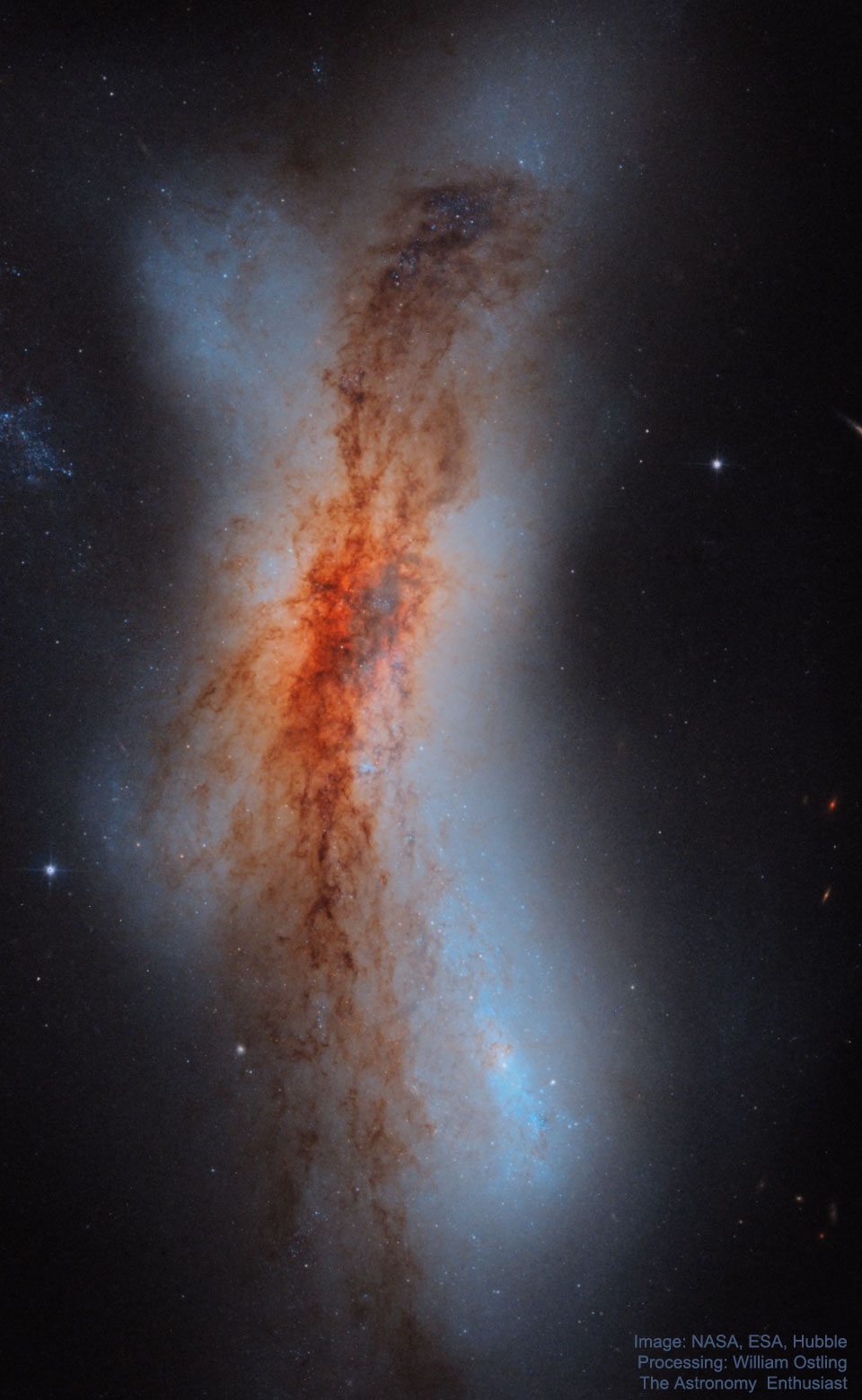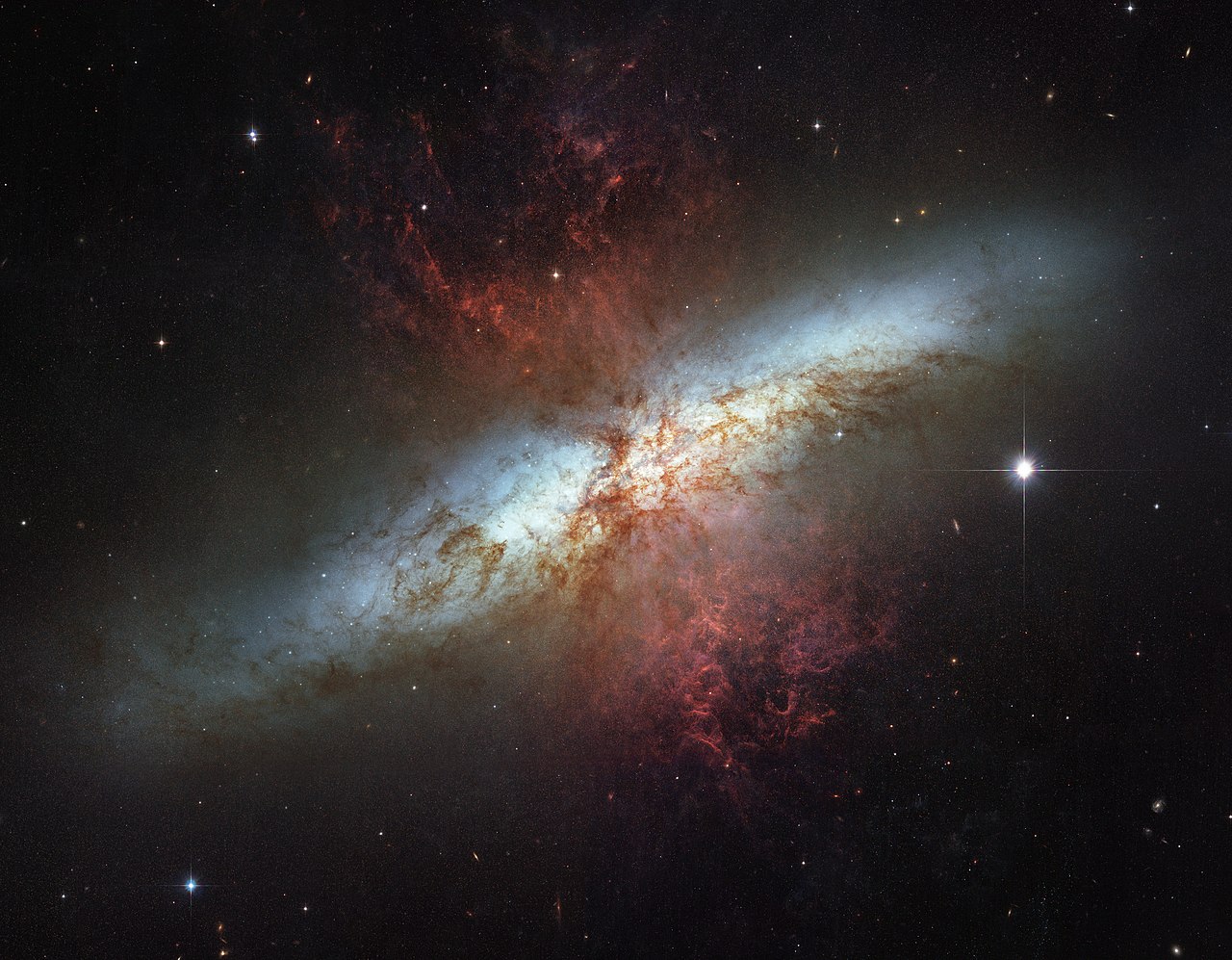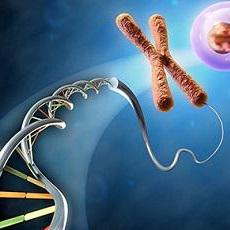Page 1 of 1
APOD: NGC 520: Colliding Galaxies from Hubble (2021 Sep 07)
Posted: Tue Sep 07, 2021 4:06 am
by APOD Robot
 NGC 520: Colliding Galaxies from Hubble
Explanation:
NGC 520: Colliding Galaxies from Hubble
Explanation: Is this one galaxy or two? The jumble of stars, gas, and
dust that is
NGC 520 is now thought to incorporate the remains of two separate disk galaxies. A defining component of
NGC 520 -- as seen in great detail in the
featured image from the
Hubble Space Telescope -- is its
band of intricately interlaced dust running vertically down the spine of the
colliding galaxies. A similar looking collision might be expected in a few billion years when our disk
Milky Way Galaxy to
collides with our large-disk galactic neighbor
Andromeda (M31). The collision that defines
NGC 520 started about 300 million years ago. Also known as Arp 157, NGC 520 lies about 100 million
light years distant, spans about 100 thousand
light years, and can be seen with a small telescope toward the
constellation of the Fish (
Pisces). Although the speeds of stars in
NGC 520 are fast, the distances are
so vast that the
battling pair will surely not change its shape noticeably during our lifetimes.
Re: APOD: NGC 520: Colliding Galaxies from Hubble (2021 Sep 07)
Posted: Tue Sep 07, 2021 10:14 am
by Ann
This is what
Wikipedia wrote about NGC 520:
1)
It is as bright in the infrared and radio bands as the Antennae Galaxies.
2)
Simulations indicate this object consists of two galactic disks that began interacting about 300 million years ago.
3)
In the X-ray band, the interacting galaxies appear around half as luminous as expected.
4)
Analysis of the gas and molecular features suggests the secondary merger component is gas poor.
5)
A large galactic wind is evident, being driven by the starburst activity.
A comparison between NGC 520 and NGC4038/NGC 4039 (the Antennae Galaxies) makes it immediately obvious that the Antennae galaxies are chock full of "clumps" of star clusters and nebulas, whereas such clumps are all but absent in NGC 520. In other words, the Antennae Galaxies are presently undergoing a starburst, whereas no signs of a starburst can easily be seen in NGC 520.
An aside here: By far most of the starburst of the Antennae Galaxies is taking place in just one of the colliding galaxies, NGC 4038 (the galaxy at top in the image). The other galaxy, NGC 4039, contributes little to the starburst.
As for NGC 520, much of its star formation ability may already be spent. Wikipedia said that one of the colliding components of NGC 520 was gas-poor, and presumably much of the gas in the other component has been used up. What we see is a rich population of bluish but moderate stars of spectral classes A and F, and only a few small clusters of hotter and more massive stars.
Yes, but Wikipedia spoke of a starburst in NGC 520! Where is that starburst located? There is only one answer: In one of the two nuclei.
The best-known example of a nuclear starburst is in nearby galaxy M82. Much like NGC 520, M82 displays virtually no signs at all of star formation in its disk. But its nucleus is a raging furnace of star formation and a furious galactic wind blowing from its nucleus.
There is apparently a nuclear starburst in one of the nuclei of NGC 520, too.
Ann
Re: APOD: NGC 520: Colliding Galaxies from Hubble (2021 Sep 07)
Posted: Tue Sep 07, 2021 12:17 pm
by orin stepanek
Boy; these two really crashed! What a mess!

Probably won't be
much left after the event

Oh; isn't he cute!
Re: APOD: NGC 520: Colliding Galaxies from Hubble (2021 Sep 07)
Posted: Tue Sep 07, 2021 3:03 pm
by VictorBorun
Re: APOD: NGC 520: Colliding Galaxies from Hubble (2021 Sep 07)
Posted: Tue Sep 07, 2021 3:23 pm
by VictorBorun
I think I can see a disk galaxy edge-on in the foreground, with a tail, and an elliptical galaxy in the background, with a tail
Re: APOD: NGC 520: Colliding Galaxies from Hubble (2021 Sep 07)
Posted: Tue Sep 07, 2021 4:26 pm
by Ann
VictorBorun wrote: ↑Tue Sep 07, 2021 3:23 pm
I think I can see a disk galaxy edge-on in the foreground, with a tail, and an elliptical galaxy in the background, with a tail
Very interesting to see where you put the nuclei of the two galaxies, Victor! The starburst nucleus must be the one where you put your yellow cross. No way there is a starburst where the green cross is!
Ann
Re: APOD: NGC 520: Colliding Galaxies from Hubble (2021 Sep 07)
Posted: Tue Sep 07, 2021 5:03 pm
by VictorBorun
Ann wrote: ↑Tue Sep 07, 2021 4:26 pm
The starburst nucleus must be the one where you put your yellow cross.
Ann
I wonder if tails are tails. Might they be curving arm extentions that the two galaxies are reaching each other with?
Or if an elliptical galaxy can't have an arm extention — a curving protuberance?
I mean curving in planes we see edge-on, so we can't in fact see the curving
Re: APOD: NGC 520: Colliding Galaxies from Hubble (2021 Sep 07)
Posted: Tue Sep 07, 2021 5:37 pm
by Fred the Cat
Pinpointing the source of high energy particles has been a
mystery. Galaxy collisions seem like a possible source.

Cosmic rays
zip into our world with
mind-boggling energy. What two galactic collisions may create, imagine what
three produce?
The
study goes on but byproducts of these interactions stimulate my neurons.

Re: APOD: NGC 520: Colliding Galaxies from Hubble (2021 Sep 07)
Posted: Tue Sep 07, 2021 6:39 pm
by Chris Peterson
Fred the Cat wrote: ↑Tue Sep 07, 2021 5:37 pm
Pinpointing the source of high energy particles has been a
mystery. Galaxy collisions seem like a possible source.:?: Cosmic rays
zip into our world with
mind-boggling energy. What two galactic collisions may create, imagine what
three produce?
The
study goes on but byproducts of these interactions stimulate my neurons. :thumb_up:
Galaxy collisions are very low energy events. SMB mergers, however...
Re: APOD: NGC 520: Colliding Galaxies from Hubble (2021 Sep 07)
Posted: Tue Sep 07, 2021 8:05 pm
by johnnydeep
Re: APOD: NGC 520: Colliding Galaxies from Hubble (2021 Sep 07)
Posted: Tue Sep 07, 2021 9:30 pm
by neufer
APOD Robot wrote: ↑Tue Sep 07, 2021 4:06 am
Explanation: Also known as Arp 157, NGC 520 lies about 100 million
light years distant, spans about 100 thousand
light years, and can be seen with a small telescope toward the
constellation of the Fish (
Pisces). Although the speeds of stars in
NGC 520 are fast, the distances are
so vast that the
battling pair will surely not change its shape noticeably during our lifetimes.
And here fantastic fishes duskly float,
Using the calm for waters, while their fires
Throb out quick rhythms along the shallow air.
— Elizabeth Barrett Browning, A Drama of Exile
Re: APOD: NGC 520: Colliding Galaxies from Hubble (2021 Sep 07)
Posted: Tue Sep 07, 2021 9:58 pm
by VictorBorun
here is another pic from the same article overlayed with the posted pic.
Had to rotate this one 2.5° clockwise; it was not precisely matching the first pic.
Re: APOD: NGC 520: Colliding Galaxies from Hubble (2021 Sep 07)
Posted: Tue Sep 07, 2021 10:13 pm
by VictorBorun
johnnydeep wrote: ↑Tue Sep 07, 2021 8:05 pm
This looks familiar...
A chromosome has a little bridge between ⟩ and ⟨ making a figure like ⟩⟨
Now NGC 520 has an X-ray visible plasma wind from the core of the foreground disk galaxy toward the middle of the long protuberance reaching out of the background elliptic galaxy. Can count as a brigde…
Re: APOD: NGC 520: Colliding Galaxies from Hubble (2021 Sep 07)
Posted: Wed Sep 08, 2021 1:20 am
by Fred the Cat
johnnydeep wrote: ↑Tue Sep 07, 2021 8:05 pm
This looks familiar...
The symmetry of this fits that of the
centromere. Possibly initiated by the primordial
turtle.

Re: APOD: NGC 520: Colliding Galaxies from Hubble (2021 Sep 07)
Posted: Thu Sep 09, 2021 4:44 pm
by Fred the Cat
Chris Peterson wrote: ↑Tue Sep 07, 2021 6:39 pm
Fred the Cat wrote: ↑Tue Sep 07, 2021 5:37 pm
Pinpointing the source of high energy particles has been a
mystery. Galaxy collisions seem like a possible source. Cosmic rays
zip into our world with
mind-boggling energy. What two galactic collisions may create, imagine what
three produce?
The
study goes on but byproducts of these interactions stimulate my neurons.

Galaxy collisions are very low energy events. SMB mergers, however...
Seems we get new news every
day about the unexpected.

I have to admire those who comb through data to find things to look for in the universe.

 NGC 520: Colliding Galaxies from Hubble
NGC 520: Colliding Galaxies from Hubble




